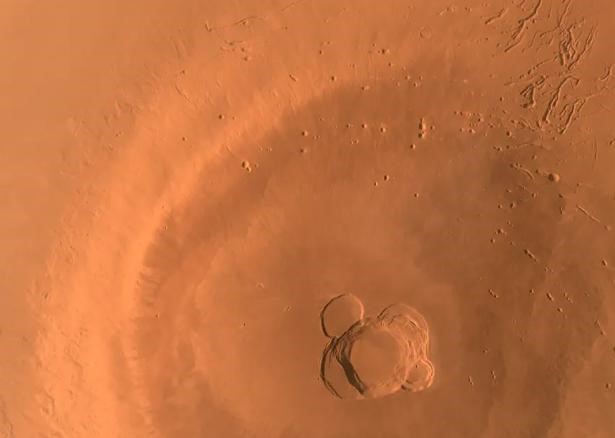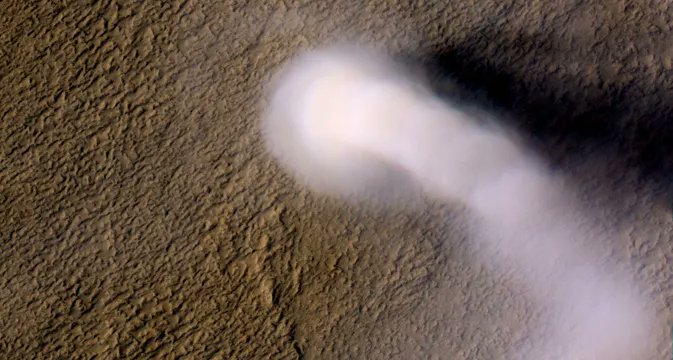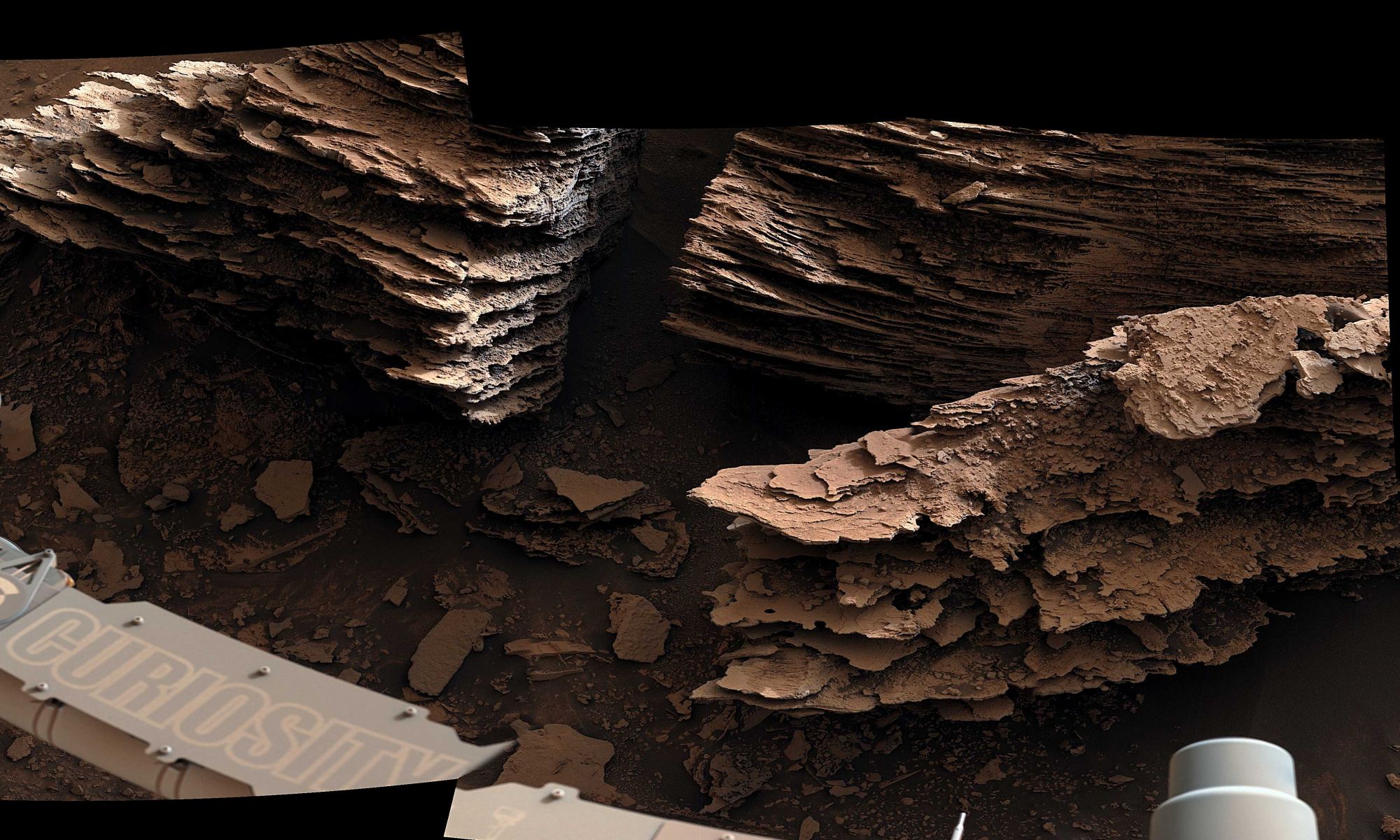After exploring Mars for more than a year, China’s Tianwen-1 space probe has successfully taken images covering the entire Red Planet, China’s National Space Administration (CNSA) announced on June 29. Tianwen-1, which translates to “quest for heavenly truth”, consists of six separate spacecraft: an orbiter, two deployable cameras, lander, remote camera, and Zhurong rover. The images in question were taken by the orbiter while circling Mars 1,344 times, capturing images of the Red Planet from every angle while Zhurong explored the surface. in the statement, CNSA said the probe has now completed all of its tasks, which included taking medium-resolution images covering the entire planet.
Continue reading “China’s Tianwen-1 has Imaged the Entire Surface of Mars, Completing its Primary Mission”Mars Rovers Will Need to Dig Deeper If They Want to Find Evidence of Life
The search for life—even ancient life—on Mars is trickier than we thought. In a recent study published in the journal Astrobiology, researchers have determined that NASA’s Mars Perseverance (Percy) Rover will have to dig two meters (6.6 feet) beneath the Martian surface in order to find traces of ancient life. This is because the surface of Mars is constantly bombarded with extreme levels of solar radiation that scientists hypothesize would quickly degrade small molecules such as amino acids. The reason for this extreme level of radiation is due to the absence of a magnetic field, which scientists believe was stripped away billions of years ago when the planet’s liquid outer core ceased to produce the dynamo that created the field.
Continue reading “Mars Rovers Will Need to Dig Deeper If They Want to Find Evidence of Life”We've Seen a Helicopter on Mars. Next, Sailplanes?
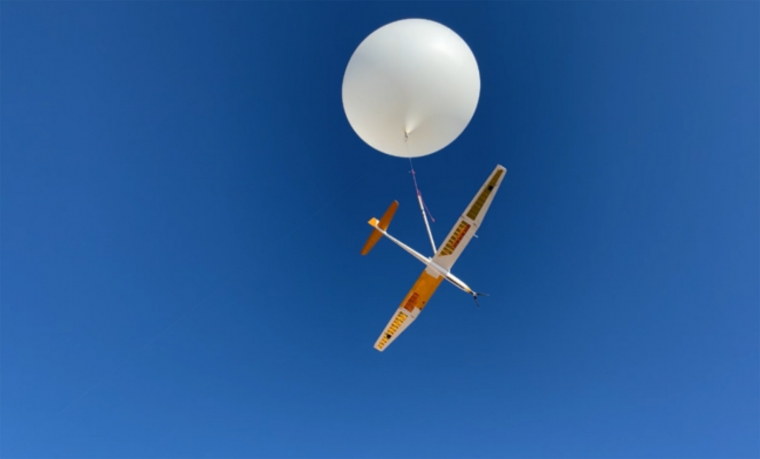
The success of the Mars Ingenuity helicopter has encouraged engineers to consider and reconsider all options for remote aerial observations of the Red Planet. Additional methods for birds-eye views of Mars would not only provide higher resolution data on the landscapes where rovers can’t go — such as canyons and volcanoes — but also could include studying atmospheric and climate processes that current orbiters and rovers aren’t outfitted to observe.
Continue reading “We've Seen a Helicopter on Mars. Next, Sailplanes?”A New Map of Mars, Made From 51,000 Orbital Images

When NASA sent the Mars Reconnaissance Orbiter (MRO) to the red planet in 2006, the spacecraft took an instrument with it called CRISM—Compact Reconnaissance Imaging Spectrometer for Mars. CRISM’s job is to produce maps of Mars’ surface mineralogy. It’s been an enormous success, but unfortunately, the loss of its last cryocooler in 2017 means the spectrometer can only undertake limited observations.
But CRISM is going out with a bang, creating one final image of the surface of Mars that NASA will release in batches over the next six months.
Continue reading “A New Map of Mars, Made From 51,000 Orbital Images”Curiosity Finds Life-Crucial Carbon in Mars Rocks
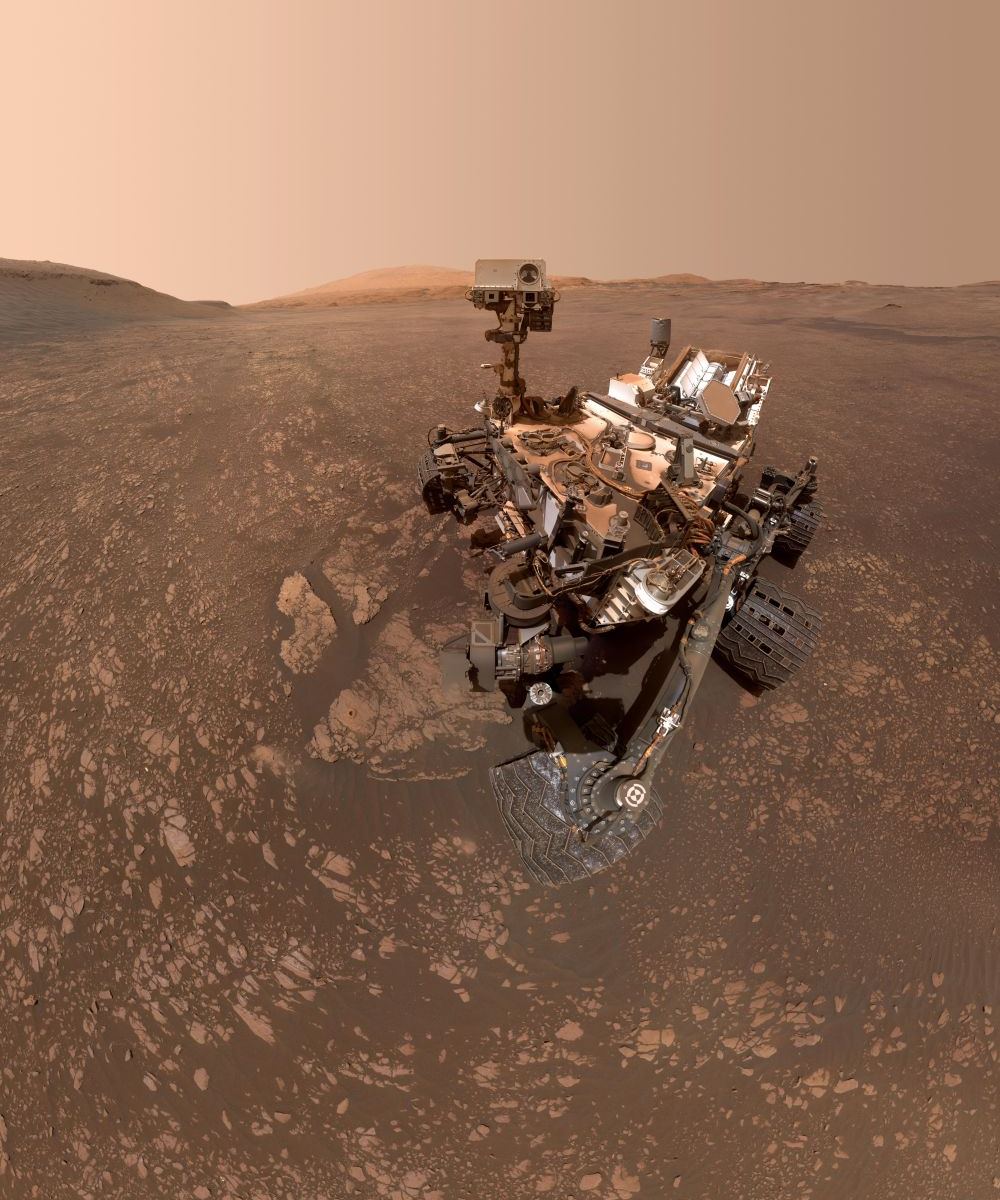
We are carbon-based life forms. That means the basis for the chemical compounds that forms our life is the element carbon. It’s crucial because it bonds with other elements such as hydrogen and oxygen to create the complex molecules that are part of life. So, when we look for evidence of life elsewhere in the solar system, we look for carbon. That includes Mars.
Continue reading “Curiosity Finds Life-Crucial Carbon in Mars Rocks”Dust Devils and Strong Winds Produce the Constant Haze on Mars
Dust is an everyday feature on Mars and wreaks havoc on various pieces of equipment humans decide to send to it, such as Insight’s continual loss of power or the losses of Opportunity and Spirit. But we’ve never really understood what causes the dust to get up into the air in the first place. That equipment that is so affected by it usually isn’t set up to monitor it, or if it is, it has been sent to a place where there isn’t much dust, to begin with. Now, that has changed with new readings from Perseverance in Jerezo crater, and the answer shouldn’t be much of a surprise – dust devils seem to cause some of the dust in the atmosphere on Mars. But strong winds contribute a significant amount too.
Continue reading “Dust Devils and Strong Winds Produce the Constant Haze on Mars”Amazing Flaky Martian Rocks Were Formed in a Stream or a Small Pond
Since 2012, NASA’s Curiosity rover has been exploring the Gale Crater for clues about Mars’ past and possible evidence that it once supported life. For the past year, this search has centered on the lower levels of Mount Sharp, a transitional zone between a clay-rich region and one filled with sulfates (a type of mineral salt). These regions can offer insight into Mars’ warm, watery past, but the transition zone between them is also of scientific value. In short, the study of this region may provide a record of the major climatic shift that took place billions of years ago on Mars.
For example, this region has unique geological features that include clay minerals that appear as flaky layers of sedimentary rock. One in particular, “The Prow,” was recently imaged by Curiosity and had the mission science teams buzzing. These features formed when water still flowed into the Gale Crater, depositing sediment at the base of Mount Sharp. Higher on the mountain, the hill was likely covered in wind-swept dunes that hardened into rock over time. In between them is where the flaky layers formed, possibly as a result of small ponds or streams that wove them among the dunes.
Continue reading “Amazing Flaky Martian Rocks Were Formed in a Stream or a Small Pond”Could We Use Mars as a Base for Asteroid Mining?

The earliest mention of asteroid mining might be in a story from 1898 titled “Edison’s Conquest of Mars,” by Garrett Serviss. In that story, Martians attack Earth, killing tens of thousands and destroying New York City. Earth retaliates and sends an armada to Mars. While travelling, the armada comes across an asteroid that the Martians are mining. The asteroid is a rubble pile of gold nuggets.
A conversation breaks out among the crew.
“Phew! Won’t we be rich?” exclaimed a voice.
“How are we going to dig it and get it back to earth?” asked another.
“Carry it in your pockets,” said one.
“No need of staking claims here,” remarked another. “There is enough for everybody.”
Their conversation was a prescient hint of things to come.
Continue reading “Could We Use Mars as a Base for Asteroid Mining?”This Bizarre Terrain on Mars is Caused by Water Ice and Carbon Dioxide
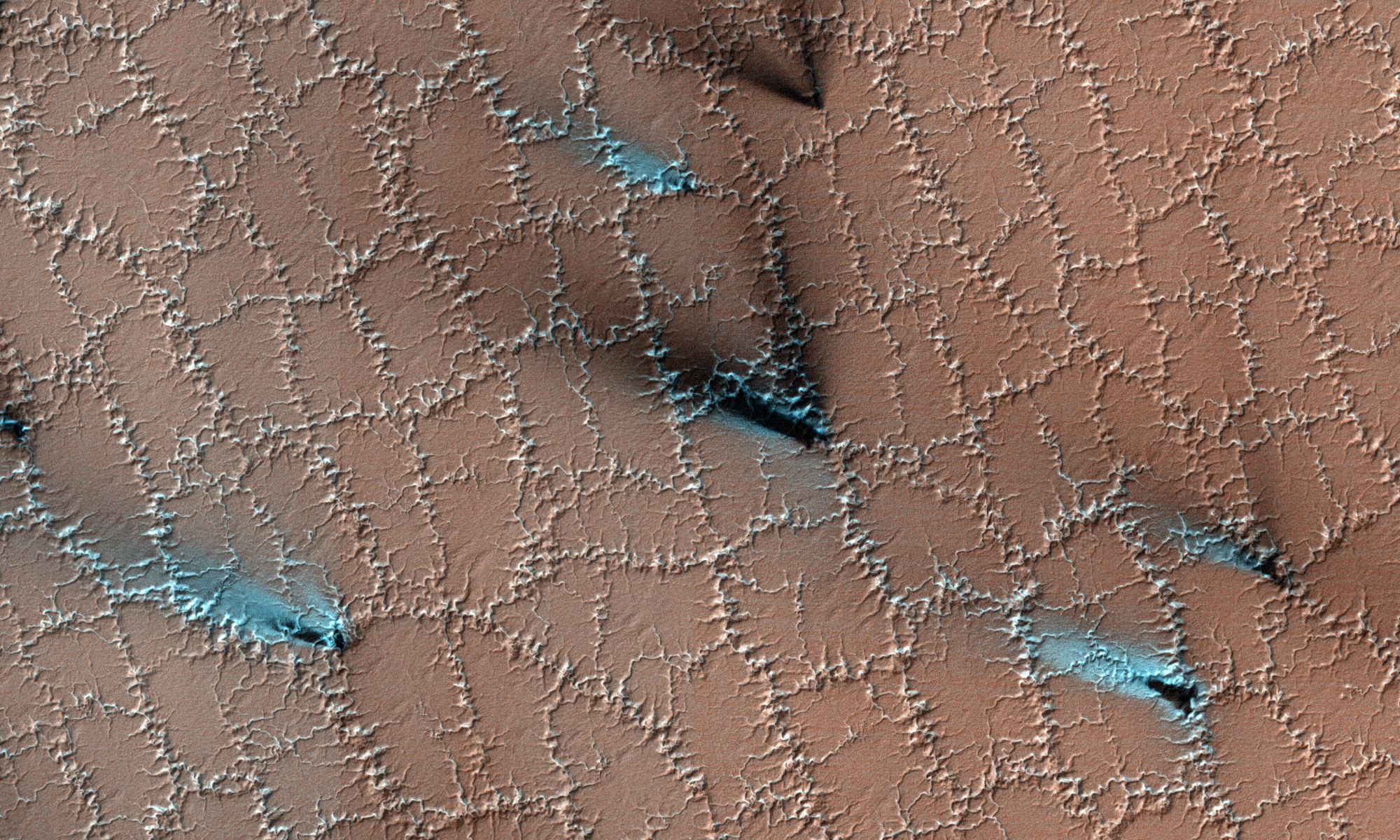
From orbit, this landscape on Mars looks like a lacy honeycomb or a spider web. But the unusual polygon-shaped features aren’t created by Martian bees or spiders; they are actually formed from a ongoing process of seasonal change from created from water ice and carbon dioxide.
Continue reading “This Bizarre Terrain on Mars is Caused by Water Ice and Carbon Dioxide”A Perfectly Balanced Rock Seen by Perseverance
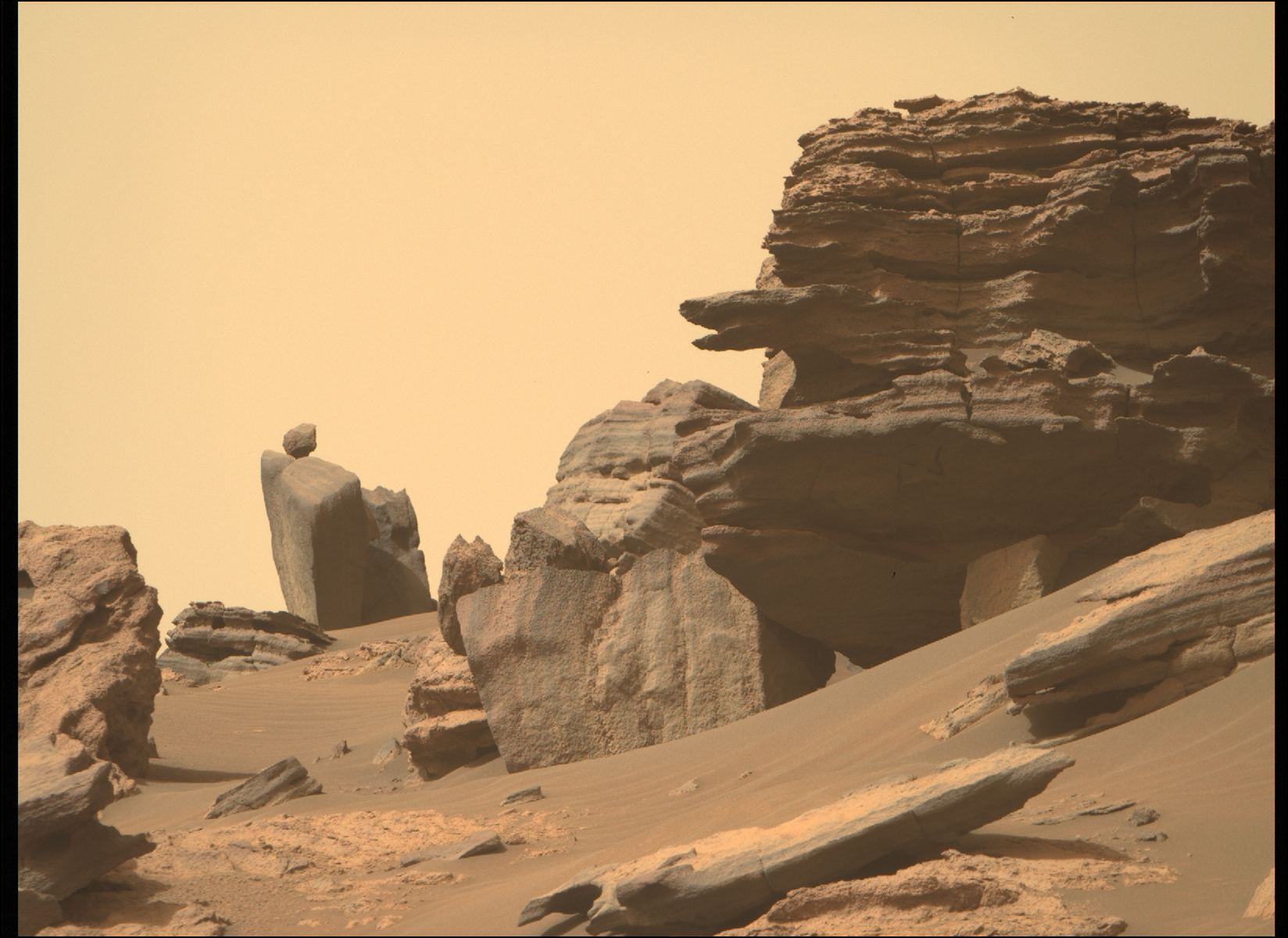
The Perseverance rover has begun exploring a region that looks a little like Monument Valley in Arizona and Utah in the US, or perhaps like a set on an old sci-fi movie. The rover’s science team has nicknamed the area “Hogwallow Flats,” and the rock formations in this area on Mars are stunning in their varied and sometimes absurd shapes and structures. One wonders what took place here eons ago to create the weird variety of formations.
While small, one feature catches the eye: a smaller rock that appears to be perfectly perched and balanced on top of a larger rock formation.
Continue reading “A Perfectly Balanced Rock Seen by Perseverance”
